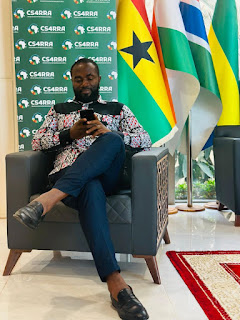MOBLIZING BAMAKO MEDIA, TELLING CLIMATE STORIES & MISSING THE TIMBUKTU BOAT
 I went to Mali expecting heat and dust, but what I found instead was rhythm. In Bamako, the very air seemed to hum with the stories of the kora, that ancient harp-lute whose strings carry the memory of empires and the laughter of griots. I was so absorbed in the swirl of music, tea, and tales that when the chance came to chase another story, to board the boat to Timbuktu, I missed it. Perhaps that is Mali’s gift: the stories are so alive where you stand, they root you to the spot.
I went to Mali expecting heat and dust, but what I found instead was rhythm. In Bamako, the very air seemed to hum with the stories of the kora, that ancient harp-lute whose strings carry the memory of empires and the laughter of griots. I was so absorbed in the swirl of music, tea, and tales that when the chance came to chase another story, to board the boat to Timbuktu, I missed it. Perhaps that is Mali’s gift: the stories are so alive where you stand, they root you to the spot.
I had come as a communications specialist, charged with organising the Malian media to tell impact stories on climate change and agriculture. I expected a challenge, but found a nation whose rhythm beats through its people and their stories. My work began not in conference halls but over cups of sweet, strong tea: kinkeliba, ataya, and others. With journalists, bloggers, and editors, our discussions moved easily from our project to the Mali Empire, the hypnotic music of the kora, and the symbolism of Bogolan cloth.
The kora, with its 21 strings, is more than an instrument. Its sound preserves centuries of memory, played by griots to recount genealogies, celebrate victories, or caution against folly. And the Bogolan, or mud cloth, is not merely fabric: each symbol, painted and soaked in river mud, represents proverbs, codes, and collective memory. These are living archives of Mali’s identity.
In the fields, I met farmers whose resilience was equally profound. Generations who had tilled the same soil now embraced climate-smart seeds and techniques. Their testimonies were not statistics, but human stories of adaptation, woven with the same patience as hand-spun cloth.
I still ask myself: why did I miss the Timbuktu boat? To many, Timbuktu is a metaphor for remoteness, yet it is a living city, once a hub of trade and scholarship. Its manuscripts and mosques whisper of an age when knowledge was Mali’s greatest wealth.
Leaving Bamako, I realised I had not just coordinated a campaign. Communication is not only about supporting colleagues to carry out their mandates. It is about working strategically together to ensure messages reach the right stakeholders and partners, shaping narratives that endure and inspire action.



Comments
Post a Comment